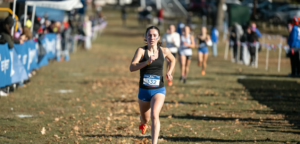By Hypoxic Smith
So seven days from the time we left Flagstaff (but not the State of Arizona!) and I’ve had time to reflect on the six days I spent at altitude and the experiment of training there, a couple of things stand out to me.
First and foremost, I do believe that training at altitude does provide a training benefit, even if I didn’t see it in my own training. First of all I knew six days would be too short a time to get a real “boost” in performance. Additionally I expect that running at altitude would be harder, as it was, but I never realized that running at an easy pace would become as lung searing as it was. When 7000 feet turns a two mile shakeout run into a 2 mile workout 6 minutes in, it really makes measuring performance benefit difficult. I probably should have recognized I’m a slow responder to altitude as the two times I’ve been over 11,000 feet I’ve been thwarted by altitude sickness while others have seen no effect.
And my three runs at Buffalo Park weren’t ideal data points considering when and how they happened. The first run was practically immediately after getting off the plane. We picked up our rental and headed straight to Buffalo Park, as we weren’t due to arrive at our airBnB until later in the afternoon.
The second run came after the run on the Hangover trail. On that run we gained (and lost) 1500 feet of elevation and at 8.5 miles it was my longest run since I had broken my big toe in September. Potentially not the best day to take data.
And finally my last run occurred the morning after we ran 10 miles down into the Grand Canyon. And while my legs didn’t feel too bad that morning, it wasn’t much after late morning the rigor mortis of climbing and descending 3300 feet over ten miles set in for the next three days. Fun two day adventure flying back to New Hampshire…
 But in the days since, after going through my Garmin data I did notice something that sticks out a little bit. While each of my runs in Buffalo Park on the Nate Avery two mile loop were essentially the same, 20:09 minutes – heart rate max 131/ 19:37 – 134/ 19:59 – 137, my resting heart rate adjusted to both the altitude as well as being back at sea level (really 1080 feet of New Ipswich, NH.)
But in the days since, after going through my Garmin data I did notice something that sticks out a little bit. While each of my runs in Buffalo Park on the Nate Avery two mile loop were essentially the same, 20:09 minutes – heart rate max 131/ 19:37 – 134/ 19:59 – 137, my resting heart rate adjusted to both the altitude as well as being back at sea level (really 1080 feet of New Ipswich, NH.)
Going through the data, the six days before I spent in Flagstaff, my resting heart rate average was 49 bpm. In Flagstaff, the resting heart rate jumped to 56 bpm, working against the effect of less oxygen in the rarified air. But in the post Flagstaff six day window, with the loss of 6000 feet, the average was 43 bpm.
Now resting heart rate isn’t exactly a measure of performance. But with that said, the lower the resting heart rate of an athlete is usually an indication of being better trained and more fit. Perusing the internet you find the explanation for a low resting heart rate in athletes means “A low heart rate means your heart needs fewer beats to deliver the same amount of blood throughout your body.” While again I don’t think I gained much fitness in the six days at altitude, I do believe that simply by spending time there, my body recognized it needed to get more blood (and thereby that more oxygen) through the system, asking the heart to work a little harder while at elevation to get the blood around. Upon return to my normal elevation, the heart simply didn’t need to work as hard to do the same work. Not only did it not need to do the same work, but over the six days it got accustomed to providing more oxygenated blood, so on my return it could even work less hard to do the same work as before. In turn, that does show some “performance benefit” even if it’s only with regard to my day to day life.
One could assume that would translate towards my running performance as well, even if improvement was slight. Had I thought of this before leaving for Flagstaff I would have run a time trial for comparison but it’s too late now.
And that’s how science goes. Most people think doing a science experiment means that once it’s over, you come up with the answer, but in reality it usually means you’ve just created a whole bunch of new questions. How many days at altitude do you need to see gains in fitness? Does simply existing at altitude provide benefits and the training at altitude is superficial? How do you maximize the benefit of altitude without sacrificing performance? What would be the best metrics to measure to show those benefits?
 While I consider myself a scientist by nature I’m not the hard data kind of guy. Sure I love hard data, but I think sometimes in the pursuit of hard data we overlook obvious signals that tell us what we were wondering all along. Let face it, the NCAA Division 1 Cross Country championships is pretty close to the ultimate measure of world class aerobic endurance. NAU has won five of the last six championships with a very high end aerobic training program (I know, I witnessed it!) Pros like Jim Wamsley and Molly Seidel call Flagstaff home. A lot of other pro groups spend time in Flagstaff to build their aerobic base. If it didn’t work would they all be doing it? I don’t think so.
While I consider myself a scientist by nature I’m not the hard data kind of guy. Sure I love hard data, but I think sometimes in the pursuit of hard data we overlook obvious signals that tell us what we were wondering all along. Let face it, the NCAA Division 1 Cross Country championships is pretty close to the ultimate measure of world class aerobic endurance. NAU has won five of the last six championships with a very high end aerobic training program (I know, I witnessed it!) Pros like Jim Wamsley and Molly Seidel call Flagstaff home. A lot of other pro groups spend time in Flagstaff to build their aerobic base. If it didn’t work would they all be doing it? I don’t think so.
So while I guess I was looking for a little more black and white answers to my questions about training at altitude, I suppose my trip only supports what I thought was true before. Sucking oxygen depleted air while training the aerobic system has benefits, even if those benefits mean you feel like death after a 20 minute 2 mile run.











